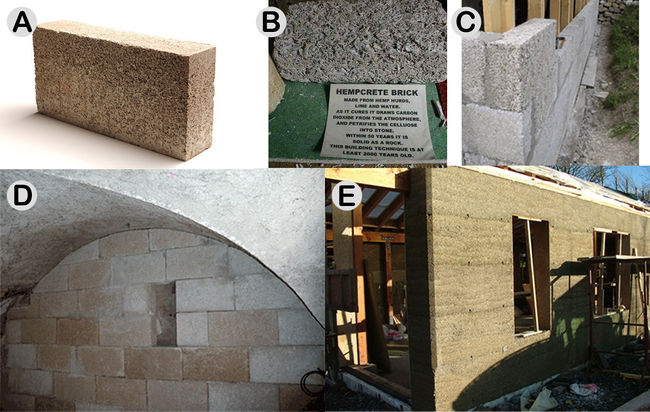Hempcrete

Hempcrete is a mixture of hemp hurds (shives) and lime used as a material for construction and insulation. It is marketed under names like Hempcrete, Canobiote, Canosmose, and Isochanvre. Hempcrete is easier to work with than traditional lime mixes and acts as an insulator and moisture regulator. It lacks the brittleness of concrete and consequently does not need expansion joints. The typical compressive strength is around 1 MPa (around 1/20 that of residential grade concrete). Hempcrete's density is only 15% that of traditional concrete.
Eco-credentials: The hemp plant used as the aggregate in hempcrete absorbs so much carbon during its rapid growth that, even after the energy used in production of the lime binder, transportation and on site construction, more CO2 is locked up in a hempcrete wall than is used to build it.
Pros and Cons
Pros
- made entirely from natural materials and is naturally fire- and pest-resistant
- Hempcrete is a sustainable/renewable material
- carbon-negative
- vapor-permeable
- In historic buildings hempcrete works in harmony with the original materials
Cons
- relatively new material, quite different from most conventional building materials; it may take time until some key concepts and techniques are understood.
- Architects who are not used to working with hempcrete and other natural materials may not find it easy to detail buildings correctly when using these materials.
Video